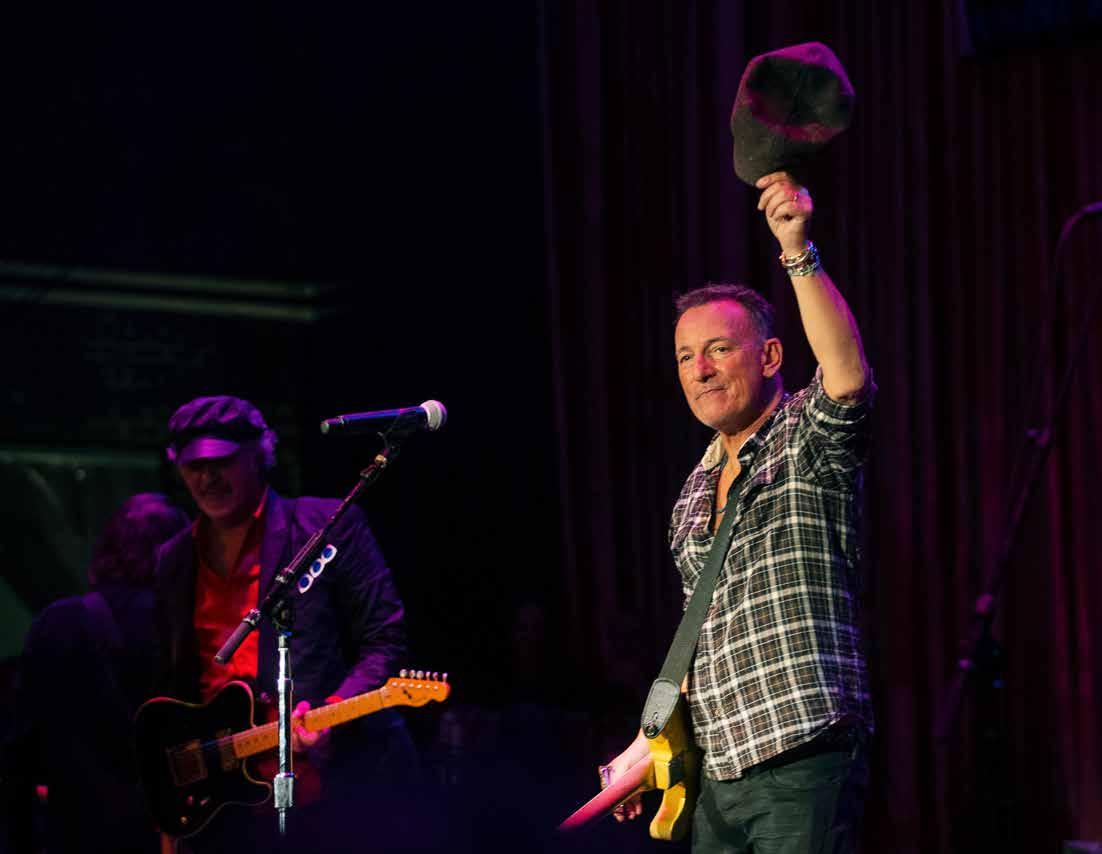

FROM FREEHOLD TO E STREET FROM FREEHOLD TO E STREET
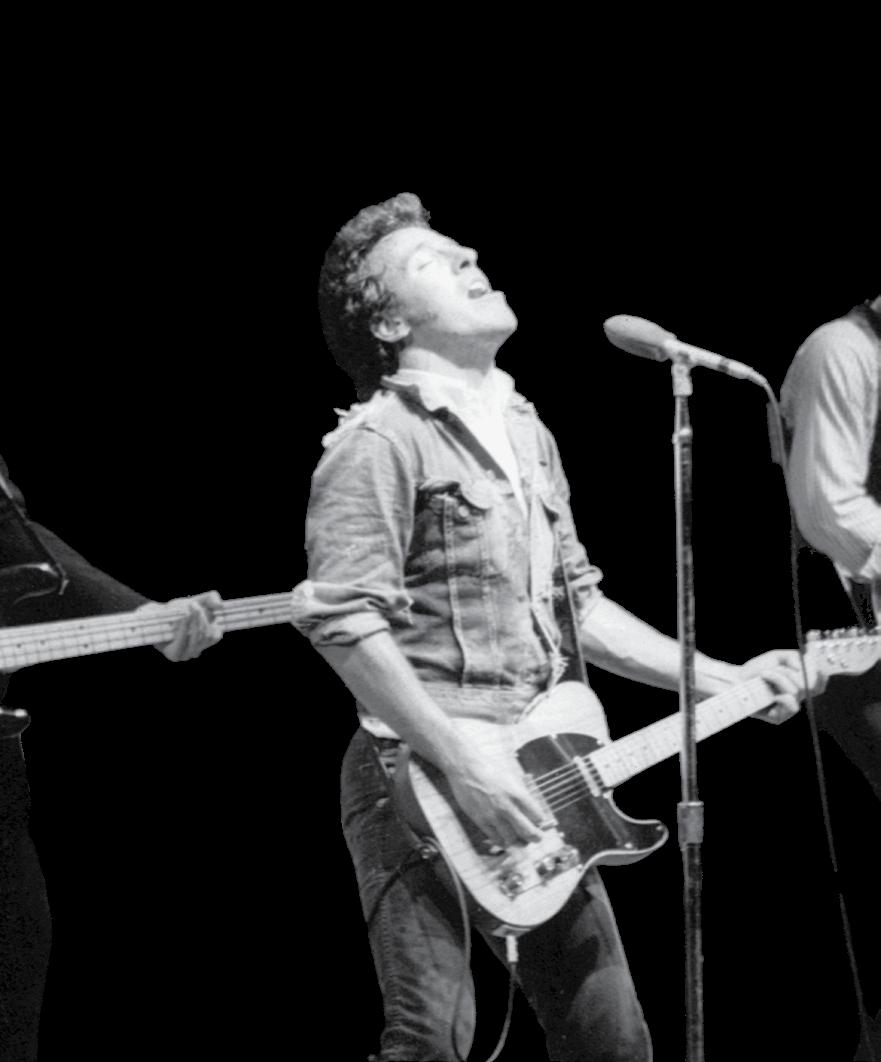
PRESENTED BY THE ASBURY PARK PRESS
Credits
EDITOR Bill Canacci
PHOTO EDITOR Tanya Breen
CHIEF CONTENT EDITORS Glenn Garvie, Joe Mason
WRITERS Chris Jordan, Jean Mikle, Joan Pikula, Kelly-Jane Cotter, Michael Riley, Wally Patrick, Marty Packin, Marianne McGowan, Yury Tarnovskyj, Jill Hand, Eric Deggans, Coleen Dee Berry, Robert Santelli
PHOTOGRAPHERS Tanya Breen, Thomas P. Costello, Peter Ackerman, Doug Hood, James J. Connolly, Jason Towlen, Bob Karp, Bob
On the cover
Bielk, Steve Auchard, Rich Gigli, Linda Cataffo, Russ DeSantis, Danielle P. Richards, Herman Gerechoff, Bradley J. Penner, Robert Deutsch, Daryl Stone, Ric Francis, Michael J. Treola, Frank Galipo, John Meore, Chris Lachall, Thomas Bender, Frank McCain, Celeste LaBrosse, George J. Evans, Chris Jordan, Robert Ward, Crissy Pascual, Brian Ferreira
SPECIAL THANKS Deb Ungerman, Kristina Cowart, Steve Feitl, Jean Mikle
EXECUTIVE EDITOR Phil Freedman
PROJECT COORDINATOR Gene Myers
FRONT COVER: Bruce Springsteen and the E Street Band perform Aug. 5, 1984, at Brendan Byrne Arena in East Rutherford, New Jersey. PHOTO BY JAMES J. CONNOLLY
PREVIOUS PAGE: The band performs July 2, 1981, at Brendan Byrne Arena.
PHOTO BY STEVE AUCHARD
RIGHT: Giants Stadium, East Rutherford, Aug. 18, 1985. PHOTO BY LINDA
978-1-63846-177-7 No part of this book may be reproduced, stored in a retrieval system or transmitted in any form or by any means, electronic, mechanical, photocopying, recording or otherwise, without prior written permission of the copyright owner or the publisher.
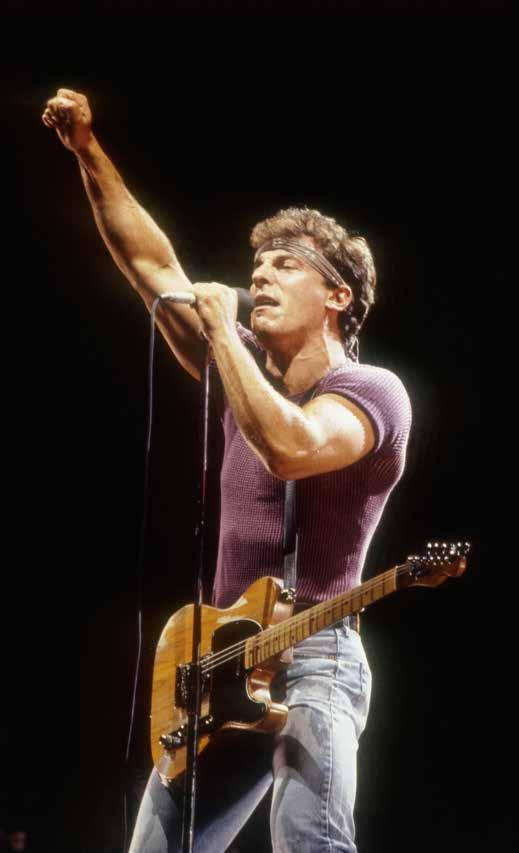
FOREWORD
BY BILL CANACCI


Iwas born in Youngstown, Ohio, a city that for much of the 20th century was a major hub of the American steel industry.
For a few months, my father was a “Hot Weather Man,” relieving those working on top of 3,000-degree ovens that were turning coal into coke, a product that makes steel. So as much as I like “Prove It All Night” and “Atlantic City,” I consider “Youngstown” to be my favorite Bruce Springsteen song.
It’s hard to pick just one, right? Earlier this year the Asbury Park Press created a Boss Bracket, a readers’ poll to determine the Best Springsteen Song. The winner was “Thunder Road,” just barely beating out “Born to Run.”
The Asbury Park Press has written countless stories about “Born to Run,” the song and the album. To celebrate the 50th anniversary, we re-featured a special series on the album, and wrote a story on what the title track means to fans.
You can read those recollections in


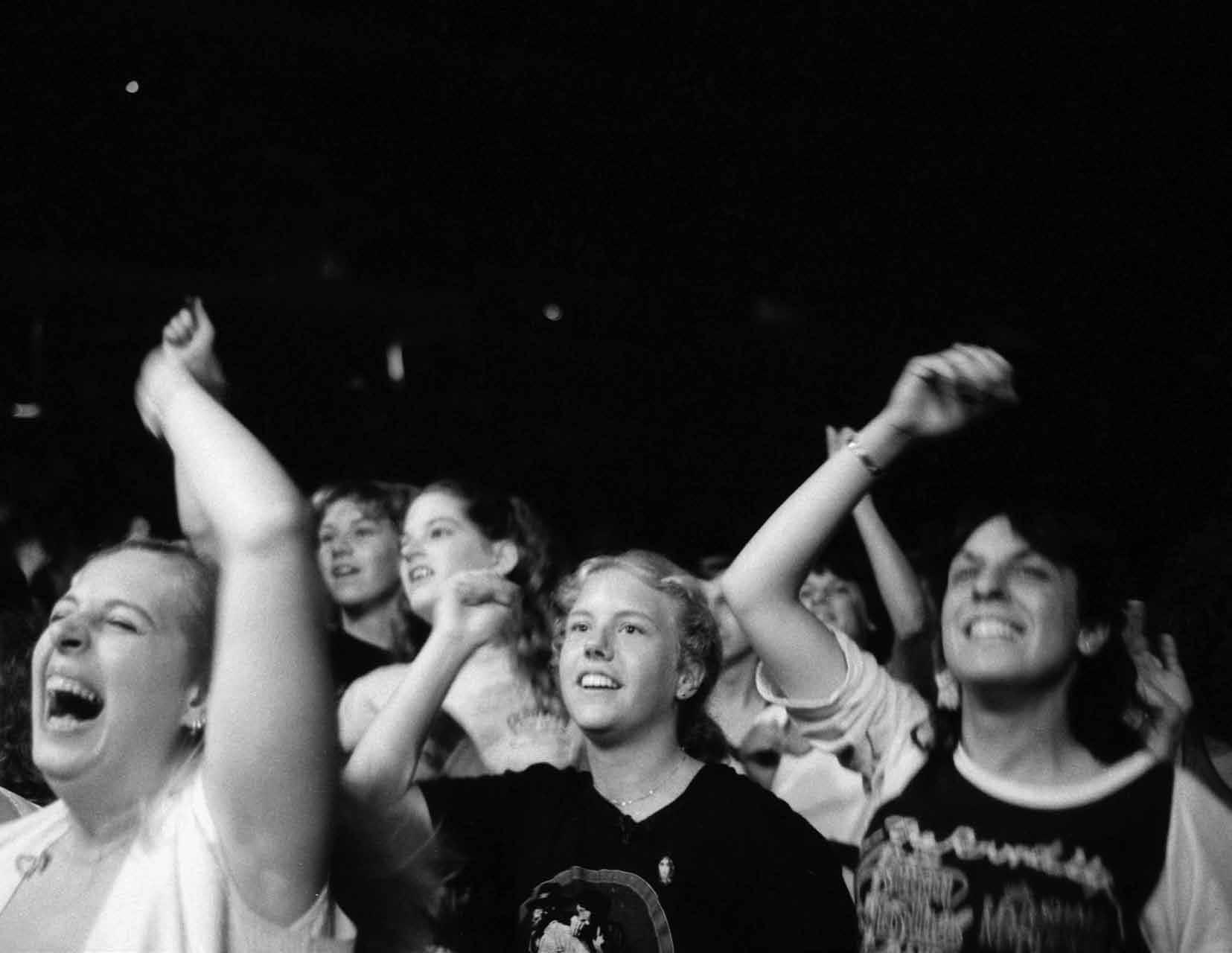
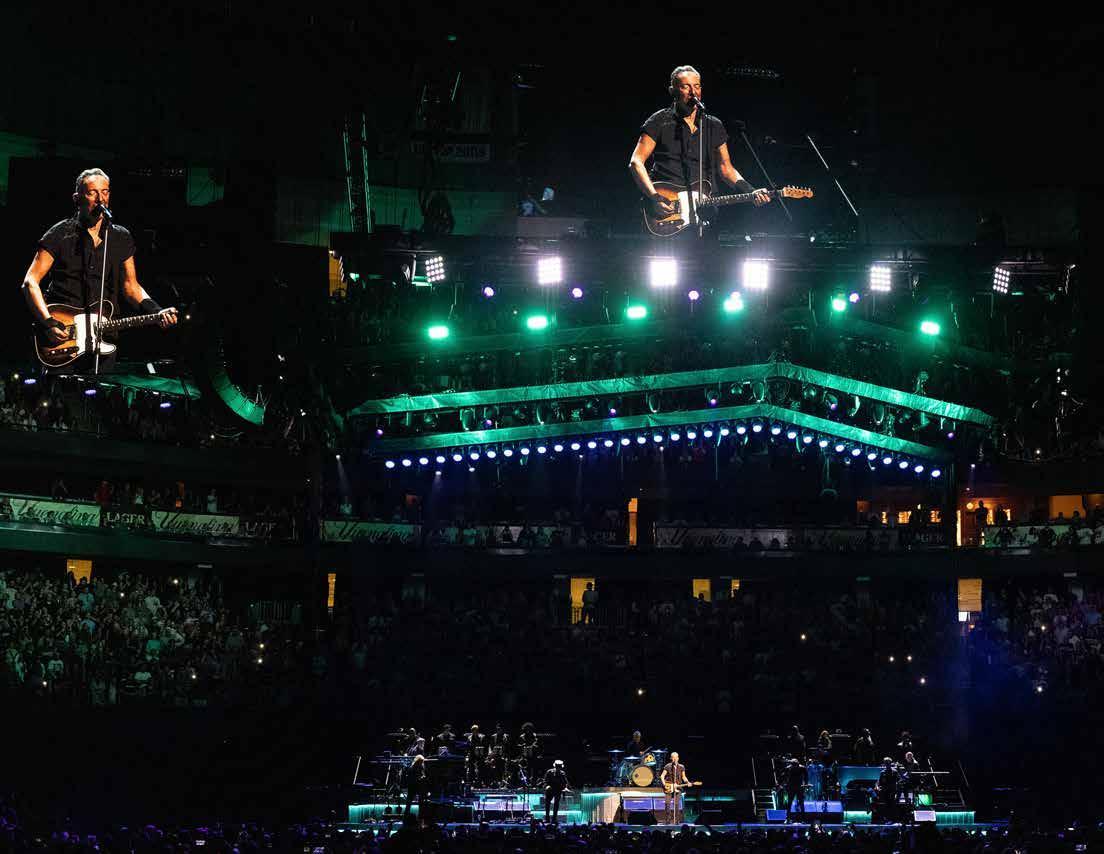

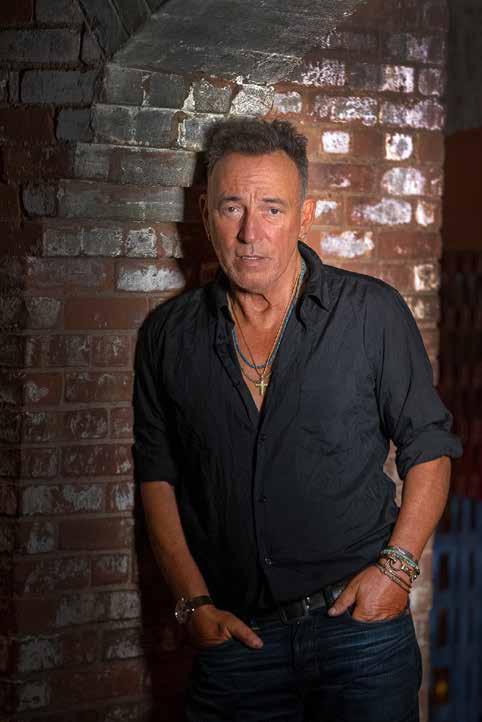
“From Freehold to E Street,” which offers a taste of the Asbury Park Press’ Springsteen coverage over six decades. We’ve been there his entire career, from Steel Mill concerts in 1970 to the magical Sea Hear Now show in 2024 on the beach in Asbury Park.
There are stories, reviews, interviews and commentary you won’t find anywhere else.
Long-time APP writer Jean Mikle remembered when the Boss opened for the Allman Brothers in 1971.
Former Press writer Kelly-Jane Cotter talked to Bruce in 1996 about music, growing up, and his fans.
The late Michael Riley, a former APP columnist, shared his thoughts in 2006 on “We Shall Overcome: The Seeger Sessions,” and the subsequent tour.
And entertainment writer Chris Jordan talked to Bruce in recent years about “Western Stars,” “Letter to You” and “Springsteen on Broadway.”
We hope you enjoy it.
And we hope you’ll check out the new Bruce Springsteen Archives on app.com. It has hundreds of stories, photos and videos — and we’re adding content all the time. Even If you are a diehard fan of Bruce Springsteen, chances are there
are things in the archive you have never seen or read.
My last day at the Asbury Park Press was Oct. 24, 2025, just two days after this book went to print — and on the same day the film “Springsteen: Deliver Me from Nowhere” was released.
As I write this, I’m listening to “Youngstown,” reflecting on my career, my colleagues, my family.
As a teenager, I would go into my older brother Vic’s room to play some of his records. In 1986, I listened to every song of Springsteen’s “Live/1975-85” album, starting with the ones that were not on “Born in the U.S.A.”
The dark rocker “Adam Raised a Cain” from Side 1 grabbed my attention, especially Roy Bittan’s haunting piano. And almost 40 years later, the song’s lyrics seem especially resonant:
“You remember the faces, the places, the names
You know it’s never over, it’s relentless as the rain … ”
Bill Canacci
Features Editor
Asbury Park Press
October 2025
Chapter One
THE STORY OF THE BOSS
‘Well I got this guitar and I learned how to make it talk’ (‘Thunder Road’)

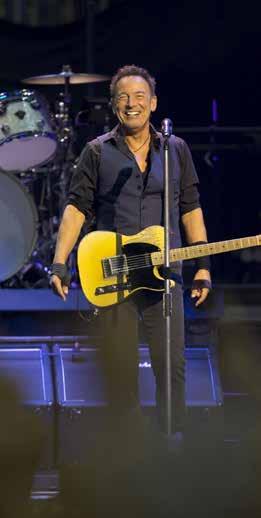
ABOVE: Prudential Center, Jan. 31, 2016. PHOTO BY
OPPOSITE: Bruce Springsteen and Clarence Clemons, Brendan Byrne Arena, July 2, 1981.
‘Like an old friend who gets us’
BY CHRIS JORDAN
Bruce Springsteen captured the imagination of the world with an American rock ‘n’ roll dream that came to him more than 60 years ago on the backstreets of Freehold and Asbury Park.
“He was sprung from a cage out on Highway 9,” said President Barack Obama from the White House in 2016. “A quiet kid from Jersey, just trying to make sense of the temples of dreams and the mystery that dotted his hometown: pool halls, bars, girls and cars, altars and assembly lines. And for decades Bruce Springsteen has brought us all along on a journey consumed with the bargains between ambition and injustice, pleasure and pain, the simple glories and scattered heartbreak of everyday life in America. I am the President, he is the Boss.”
Springsteen has sold more than 135 million records in his career and won 20 Grammy Awards, two Golden Globes, an Academy Award, and a Tony Award. He received the Kennedy Center Honors in 2009 and was MusiCares Person of the Year in 2013. In 1999, he was inducted into the Rock and Roll Hall of Fame by Bono of U2.
Freehold and Asbury Park have become to Springsteen what Dublin is to James Joyce, Harlem is to Langston Hughes, and Liverpool is to the Beatles. Fans come from around the world to see the sites at the Jersey made famous by the Boss, from
E Street in Belmar to the Stone Pony in Asbury Park.
The following pages feature stories and pictures from the Asbury Park Press’ archives of Springsteen’s remarkable career dating back to the days before the E Street Band when he was largely unknown except to a small cadre of loyal fans — and the Asbury Park Press.
The Press first wrote about Springsteen when his teenage Freehold band the Castiles played the Shore in 1967. During one show, the group opened for the Broadways of Asbury Park at the Oceanside Surf Club in Sea Bright.
The Press and app.com have been there throughout his storied career: his pre-stardom days playing the Asbury Park clubs; the debut album, “Greetings from Asbury Park, N.J.”; his breakout “Born to Run” success; the “Born in the
U.S.A.” glory days; the E Street Band reunion tour; and the triumphant Sea Hear Now homecoming concert performed on the Asbury Park beach.
Born to rock
Springsteen was born Sept. 23, 1949, at Monmouth Medical Center in Long Branch to Douglas and Adele Springsteen. The family, which later included sisters Virginia and Pamela, lived by humble means in Freehold.
“No hot water, four tiny rooms,” Springsteen wrote of an early family residence in his “Born to Run” autobiography. As a child, young Bruce was shy but focused. A Freehold High School classmate observed that Springsteen was so quiet in school that she asked him to sign her yearbook because she thought he had so few friends.
“He was sprung from a cage out on Highway 9. A quiet kid from Jersey, just trying to make sense of the temples of dreams and the mystery that dotted his hometown …”
PRESIDENT BARACK OBAMA ON BRUCE SPRINGSTEEN
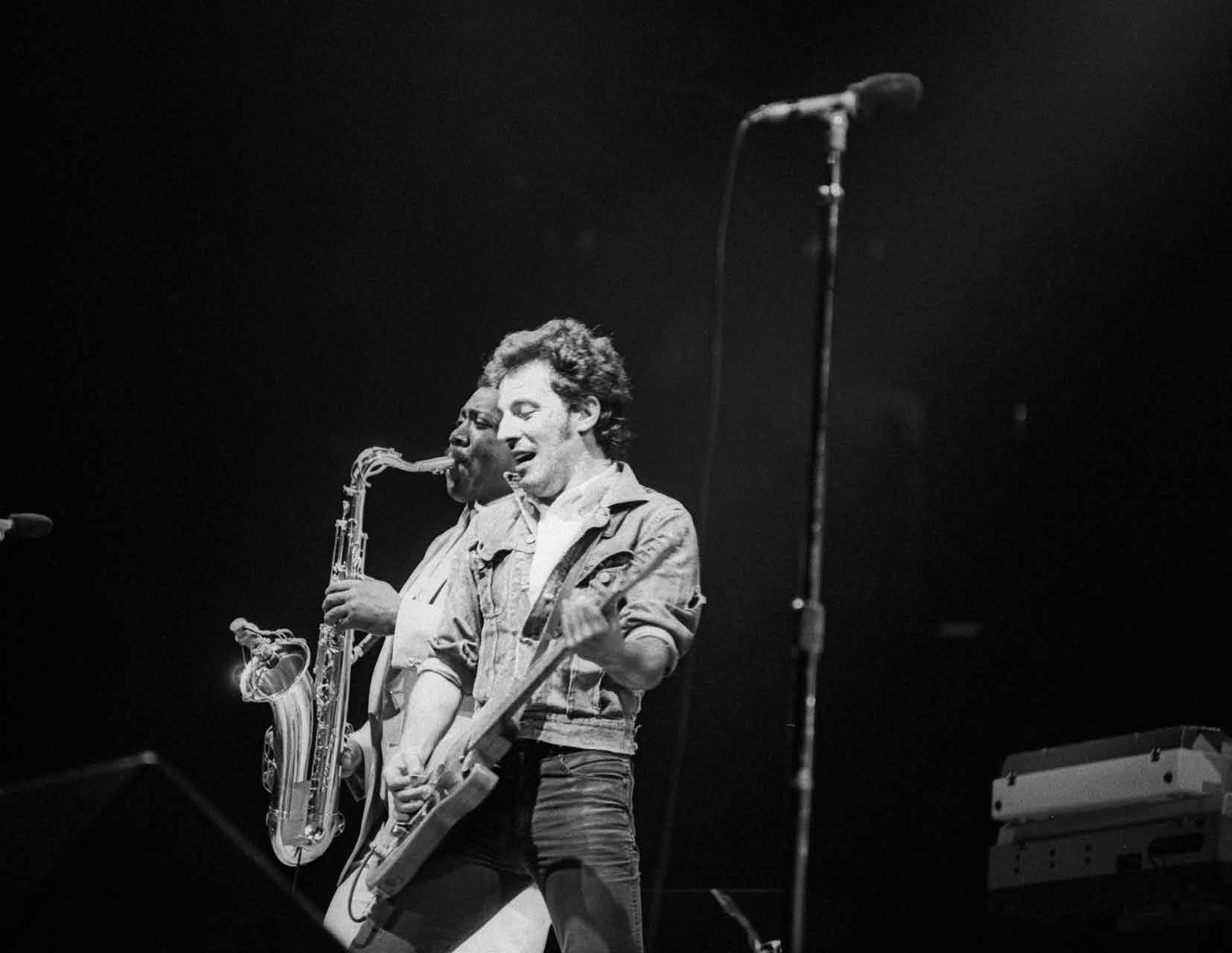
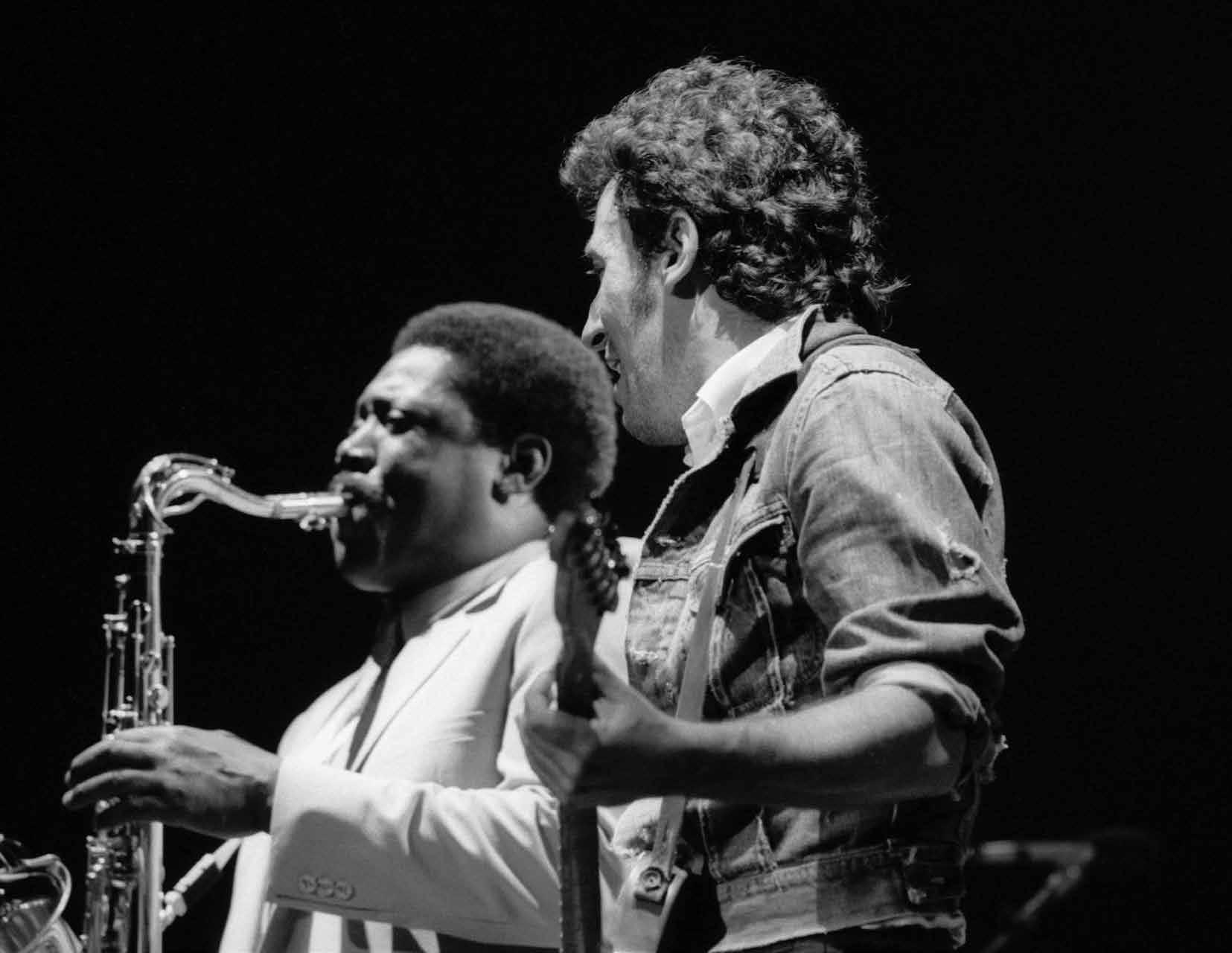
“He didn’t say two words,” said childhood friend and future bandmate Steven Van Zandt of the teenage Springsteen on the Pushkin podcast hosted by Bruce Headlam. “If you picture the grunge guys with their hair down to their knees and just staring down playing, not saying a word, that’s him. Watching this very, very shy guy turn into the world’s greatest entertainer was quite a front-row seat to a remarkable transformation.”
At 15, Springsteen joined the Castiles. They became a big draw in the Freehold area, and even recorded a record in Brick that Springsteen would eventually release 40 years later. By 1968, the Castiles had run their course and the future Boss went to Asbury Park, starting with a night at the Upstage Club coffeehouse on Cookman Avenue. He was the new gunslinger in town.
“I fried the paint off the place with all the guitar pyrotechnics and wizardry my eighteen-year-old fingers could muster,” wrote Springsteen in his autobiography “Born to Run.” “I’d had a lot of playing experience by now, but in Asbury I was the Man with No Name, a stranger in the process of burning your club down.”
Vini “Mad Dog” Lopez of Neptune asked Springsteen to join his band, which soon became Steel Mill. They were a hit on the local scene.
“Perhaps Steel Mill will be the Shore’s Airplane or Band. Perhaps it will be the band to put this coastal playground on the pop music map — a Mecca in its own right,” wrote Joan Pikula in a 1970 article in the Asbury Park Press.
Eventually, Steel Mill manager Carl “Tinker” West introduced Springsteen to record producer and manager Mike Appel.
Thanks to Appel, Springsteen auditioned with John Hammond, the famed Columbia artist and repertoire man, who signed him up. Hammond wanted Springsteen to be a solo act, but Columbia label head Clive Davis and Springsteen co-manager Jim Cretecos wanted a band to back the new signee.
Springsteen also wanted a band, and it was to be.
The E Street Band
The E Street Band has helped define Springsteen’s sound and place. Yes, there is a real E Street — it’s in Belmar. Former keyboardist David Sancious lived there at the time, and the band would sometimes rehearse there.
“My recollection is we were on the bus one night trying to come up with a band name,” Springsteen said. “(E Street Band) seemed pretty easy — it just had a nice ring to it — E Street. E Street. Well, David lives on E Street, David was a big, important part of the band at the time and it just came up.”
The band grew out of the former Steel Mill, which included Lopez on drums, Danny Federici on keyboards and Vinnie Roslin on bass. The lineup went through several changes until Lopez, Federici, Garry Tallent on bass and Clarence Clemons on saxophone began touring the country in support of Springsteen’s “Greetings from Asbury Park, N.J.” debut in 1973.
“Live, I wanted the collective and living identity and living representations of the characters who populated my songs,” said Springsteen in “Born to Run” of the band.
“So live, we would be Bruce Springsteen and the E Street Band. That sounded

Brendan Byrne Arena, July 2, 1981.
Brendan
Aug. 5, 1984.
Chapter 2
BEFORE THE FAME
‘I hear the guitars ringin’ out’ (‘Where the Bands Are’)

from the

What was Bruce Springsteen like growing up in the 1960s?
BY COLEEN DEE BERRY
The following story was part of a special section on Bruce Springsteen, published in the Asbury Park Press on Aug. 18, 1985.
“I stood stone-like at midnight, suspended in my masquerade, I combed my hair till it was just right, and commanded the night brigade.” — “Growin’ Up”
George Theiss remembers the day quite clearly. The day he and some of his buddies at Freehold Regional High School walked into the bathroom at school and came out with their hair combed down over their foreheads, around their ears.
“Our hair wasn’t any longer, but since we didn’t have it combed back, it was different. Suddenly we were different. It was like a changing of the guard,” Theiss, now 35, recalled. “All the kids were going, ‘Oh, so you guys think you’re the Beatles, huh, right?’ But that’s just who we wanted to be.”
Not long afterwards, in 1965, Theiss formed a band he named the Castiles, after a popular brand of soap. The band was taken under the wing of one Tex Vinyard,
a crusty, on-strike factory worker who took a shine to the boys.
There was just one problem, Theiss said. The band had no one who could play lead guitar.
At the time, Theiss was dating a girl named Ginny Springsteen. Ginny told the aspiring band leader that her brother Bruce played guitar.
“I had remembered seeing Bruce in the hall (at school). He wasn’t really hanging out with anyone,” Theiss said. “He was real quiet. He kept to himself.”
So Theiss invited Bruce Springsteen to try out with the band.
He showed up at Vinyard’s house carrying a guitar, but knowing only a few chords. Vinyard sent him back home, advising him to practice, Theiss said.
“Everyone knows the story by now,” Theiss said. “He came back the next night and ripped off about five songs he learned by listening to the radio. He was in the band.”
“I pushed B-52 and bombed ’em with the blues, with my gear set stubborn on standing,
I broke all the rules, strafed my old
high school, never once gave thought to landing.”
— “Growin’ Up”
Freehold has not changed appreciably since the 1960s, [though] it’s no longer the commercial hub of western Monmouth County. Shopping centers along Route 9 and the malls on Route 35 have seen to that. But Freehold’s status as the county seat continues to bring a certain bustle to its small business district, with its Victorian houses and one-story storefronts.
“It was a nice town to grow up in,” said Mayor Michael Wilson, a classmate of Springsteen’s and a member of a rival band. “There were teen clubs back then, a lot of things we could do.”
And, just 15 miles to the east, was Asbury Park. By the ’60s, the resort was going downhill, but it still had some kick left. Enough life to draw big-name rock ‘n’ roll bands to play in the city’s 3,800-seat Convention Hall.
Theiss, who saw the Who, Jefferson Airplane, the Rolling Stones and the Doors in Asbury Park, remarked, “It was a good breaking-in place for [the bands], I guess,


Bruce Springsteen at 29: Superstar is back home
BY MARIANNE M c GOWAN
This story originally appeared in the Asbury Park Press on Sept. 24, 1978.
He’d just played an exhilarating four hours to a young, teeming crowd. After concert No. 82 on his national tour, Bruce Springsteen was wide awake and happy.
He was back home in New Jersey and had given three sell-out concerts at the Capitol Theatre in Passaic, one of them a live broadcast over New York radio station WNEW-FM.
After the third show Thursday night, billed as his birthday show (he turned 29 yesterday), Springsteen felt good and walked into a backstage room for an interview smiling. The only time he can talk, he says, is after a show. If it’s been good, he feels at peace. And he felt at peace Thursday night.
“I’ve been giving interviews to everyone else, and I wanted to talk to the Jersey papers,” he said.
Since the release of his fourth album, “Darkness on the Edge of Town,” a Columbia record that made the Top 10, and the start of his concert tour, the media rush is on again for the street-hero singer
from Freehold and Asbury Park.
His spellbinding [sold-out] performances in places like the Los Angeles Forum, Phoenix Coliseum, Spectrum in Philadelphia and Madison Square Garden in New York have re-established him as one of the nation’s hottest rock ‘n’ roll performers.
But Springsteen was ready for it this time. The tour was different from his last one, he thinks, because he was more in control.
“This time I did what I wanted to do. Last time I didn’t have the particular experience — the whole thing got out of hand.”
On stage, he excites thousands, bringing them to their feet, shooting their fists overhead, beating in tempo or dancing on their seats.
The frenetic antics punctuating his music are well known and anticipated now — his jumping, punching, jerking, swiveling, swaying and dramatic leaps into the audience. And the young masses are drawn to him like a magnet.
Springsteen gives his all, never losing contact with his followers who have plunked down as much as $9 for tickets (and up to $20 to scalpers) to see the Jersey dynamo live. He talks to them, laughs, tells stories and jokes about himself.
Offstage, unadorned by the lights and the sound, Springsteen shrugs off his fame.
“It’s my face,” he says, laughing, when asked what his fans love about him.
“The music. They like the band, they like the songs. I don’t think they connect
His spellbinding [sold-out] performances … have re-established him as one of the nation’s hottest rock ‘n’ roll performers.
on a super personal level.”
Springsteen seemed to feel good about being in New Jersey again.
“Anytime you’re within the state, the crowd lets you know it.”
His one regret about the four-month tour was not playing at the Jersey Shore.
“Looking back, I wish I had played the (Garden State Arts Center in Holmdel), but I hesitated playing outdoors,” he said. Springsteen likes “room sound.”
But he’s reconsidering and may make an appearance there next season.
“We should’ve played Jersey more than we did,” he admits. But because it was summer, the places were limited with the schools out.
In Asbury Park, he’s never played outside the Stone Pony, or some of the other bars where he started his climb.
“I played in those bars quite a bit,” he reminisced.
“The problem with Convention Hall (Asbury Park) is I never liked the sound. The floor isn’t covered and the spaces are too wide open.
“The Paramount has only 1,500 seats and we would have to play two weeks. Even that’s not enough.”
Except for the two weeks he and his E Street Band rehearsed in the Paramount last spring before the show, he hasn’t been able to spend much time in his rented Holmdel house.
“I had the best nights at home the two days before I played (Madison Square Garden in August). I really got out. I had my car and I got down to Asbury. Every night I got in my car and drove all the way from my house to Manasquan and I just drove around, ain’t goin’ any place, I just looked. It was really nice. The weather was great.
“I never feel better than when I go out and play good. That’s something that’s got to come from some other place.”
BRUCE SPRINGSTEEN
“I went on the boardwalk and I walked up and down. It was the closest I got to feeling I was home.”
He leans forward and talks about he changes he’s noticed since he’s been gone, distant at first, then increasingly more excited about them.
“It’s different. Like they got this water slide in Long Branch and the haunted house.”
Springsteen still identifies with New Jersey, which now has a musical identity it lacked when he was growing up in Freehold. But, characteristically, he credits concert promoter John Scher with helping make a “Jersey thing.”
When he was 18 and went to San Francisco, he found our there were people who didn’t know what New Jersey was.
“They thought it was a big refinery between New York and Philly. That always blew me out.”
And he resisted being called a New York performer, though he had played clubs like the Bottom Line in Greenwich Village.
“I said ‘I’m from New Jersey.’ I pushed on that a lot in the beginning. Then all of a sudden you go some place and say ‘New Jersey’ and people cheer.”
What matters to him is his music and he talks about keeping his perspective on it, not getting caught up in money or possessions.
“I’m not hooked up on that stuff. It doesn’t interest me,” he says.
“People make the mistake in thinking that something is won or lost in a physical plan rather than in your insides.
“People measure how you grow up strictly through physical things like a new car or a new house. If you let yourself get distracted by it, like every night you run out to your limousine or let yourself get hung up on it, that’s how you blow it. When a new shirt is more important than a new song (he wasn’t wearing one under his vest) or a new car is more important than rehearsing the band. I don’t have too much time for that stuff. All I bought was a new car. I rent the house I live in. I don’t have to sweat the rent.”
Springsteen says he has enough money to go out when he wants to and doesn’t have to worry about paying his band. But not to the point that he can afford to be too frivolous, he says.
“It depends on what you’re in it for. I find myself drawn toward other things …”
People who get blown away by that kind of thing lose their perspective.
“I never feel better than when I go out and play good. That’s something that’s got to come from some other place.
“You can’t buy that, man. You can get paid a million dollars but if you don’t play good, you don’t play good.

Springsteen includes ‘Jersey set’ during 4-hour benefit show at Meadowlands
BY ROBERT SANTELLI
This story originally appeared in the Asbury Park Press on June 26, 1993.
IF Bruce Springsteen ever needed a reason to sell his California mansion and make New Jersey his primary residence again, he could choose from a couple of pretty solid incentives.
New Jersey fans are unquestionably Springsteen’s most loyal, most loving and most passionate, especially when it comes to showering him with praise and approval in a concert setting.
Some of his greatest performances have been in New Jersey.
Like, for instance, the one Thursday night at the Meadowlands’ Brendan Byrne Arena in East Rutherford — the 28th he’s done at the venue since 1984 (not counting six at Giants Stadium).
The marathon 4-hour show was the first of two area benefit concerts Springsteen planned — the other takes place tonight at Madison Square Garden in New York and
is sold out — to end his 1992-93 “Human Touch”/”Lucky Town” world tour, and to raise money for a few of his favorite charities.
Proceeds from the Meadowlands show, which amounted to close to a half million dollars, will go the Hillside-based Community Food Bank of New Jersey, as well as two New York charities, the Food & Hunger Hotline and World Hunger Year.
Money raised at tonight’s Garden show, already estimated to be in the neighborhood of $1.5 million, will go to the Kristen Ann Carr Fund, set up after the cancer death in January of the 21-year-old daughter of Springsteen’s co-manager Barbara Carr and music critic Dave Marsh.
As most longtime fans know, Springsteen benefit concerts have traditionally been gala, extra-special events, often inspiring the Boss to perform on an even greater emotional plane than usual and to hatch a few surprises. Thursday night was no exception.
Although there were many magical moments during the concert, certainly the ones that generated the most excitement and had the most historical significance were those that occurred during the encores. By bringing out as special guests guitarist-singer Little Steven Van Zandt, drummer Max Weinberg and saxophonist Clarence Clemons, Springsteen came as close as he’s ever come to staging a fullscale E Street Band reunion.
Springsteen called the encores his “Jersey set,” since it also included the Miami Horns, who have accompanied Springsteen on tour in the past; keyboards player Roy Bittan, who is the only E Streeter in Springsteen’s current band; and singer Southside Johnny. Earlier in the evening, Springsteen brought out former E Street Band back-up vocalist and wife Patti Scialfa, much to the delight of the Meadowlands audience.
Springsteen could have had all the E Streeters on stage at once, but he chose

to bring them up one by one, thus avoiding — perhaps deliberately — an E Street reunion where all of the musicians were on stage at the same time.
Van Zandt was introduced first and performed “Glory Days” with Springsteen. Next up was Southside Johnny, who, along with Springsteen, Van Zandt and the Miami Horns, did a riveting rendition of “It’s Been a Long Time” from Southside’s “Better Days” album.
Clarence Clemons followed and garnered a thunderous ovation as Springsteen and the band broke into “‘Tenth Avenue Freeze-Out” and “Born to Run.” Finally, Weinberg was introduced and was met with an equally enthusiastic roar. He played “Jersey Girl” with Springsteen.
The response the E Street members got had to make an impact on Springsteen.
Though the musicians he replaced the E Streeters with are certainly competent, they in no way have ever matched the flawless musicianship, long friendship and rock ‘n’ roll intimacy Springsteen enjoyed with his original unit.
Yet his new band rose to the occasion Thursday night. It was, after all, this outfit that supported Springsteen through such great interpretations of “Leap of Faith,” “Atlantic City,” “Because the
Night,” “Souls of the Departed,” “Brilliant Disguise,” which he touchingly concluded by dancing with Scialfa, and “Light of Day,” in which Springsteen and second guitarist Shane Fontayne traded astonishingly intense solos.
Despite the E Street surprise and the solid delivery of his new band, the night still belonged to Springsteen. Looking perfectly scruffy with his fashionable goatee and road-hardened grin, Springsteen opened his show with a stunning acoustic version of Woody Guthrie’s “I Ain’t Got No Home,” which ideally set up the theme of the show: to help the needy of the New York-New Jersey metropolitan area.
Other memorable moments that featured Springsteen in a solo light included the brilliant “This Hard Land,” which was written for the “Born in the U.S.A.” album in the early ’80s but never recorded, and the dusty gem “Does This Bus Stop at 82nd Street?” from Springsteen’s 1973 debut album, “Greetings from Asbury Park, N.J.”
It was indeed a classic Springsteen show. Those fans lucky enough to attend Thursday night’s concert will store it in that part of their brain that houses their best Bruce memories.
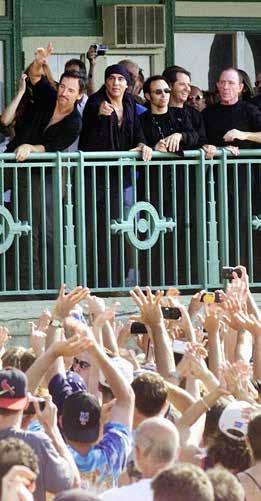
Springsteen, ‘Today’ show, come to Asbury Park
BY CHRIS JORDAN AND KELLY-JANE COTTER
This story originally appeared in the Asbury Park Press on June 25, 2002.
LIVE from Asbury Park, it’s Bruce Springsteen. the Boss and the E Street Band will perform several songs live from an as-yet undisclosed location in the city on July 30 as part of the “Today” show, a source at NBC confirmed.
The appearance will coincide with the release of “The Rising,” the first new album from Springsteen and the E Street Band since 1984’s “Born in the USA.”
NBC expects to make a formal announcement about the broadcast today.
Asbury Park city officials had no further details yesterday, said Charles Rouse Jr., coordinator of special events for the city.
On July 29, the night before the broadcast, the Stone Pony and Jack’s Music
in Red Bank will host a midnight record release event at the club in Asbury Park, according to Chris Van Orden, the record shop’s manager. He didn’t know whether the new CD will be sold at the club or whether fans will have to preorder it.
Jack’s Music hosted a midnight sale of Springsteen and E Street Band’s previous release, “Live in New York City,” and Springsteen showed up to hang out with fans.
According to several sources, Springsteen has booked a string of dates at Asbury Park’s Convention Hall late in July. It’s not known if the dates are reserved for a private rehearsal or for warmup concerts like the ones Springsteen and the band staged before their reunion tour in 1999.
Shore Fire Media, Springsteen’s publicist, had no information about any summer concert dates. However, the publicist
did announce that the label will officially release the first single, “The Rising,” to radio on July 16. The B side will be a live version of “Land of Hope and Dreams,” which was performed on the reunion tour. Until then, the single “The Rising” is available via the Web for AOL users at keyword: First Listen, at Netscape Music, and at brucespringsteen.net. Three additional songs from “The Rising” will be offered at the site: “Lonesome Day” on July 8; “Into the Fire” on July 15; and “Mary’s Place” on July 22.
“The Rising” was played twice on New York City’s WPLJ-FM Friday morning before Springsteen’s record label, Columbia, asked the station to stop playing it before its official release.
Staff writer Nancy Shields contributed to this story.
PHOTO BY TANYA BREEN
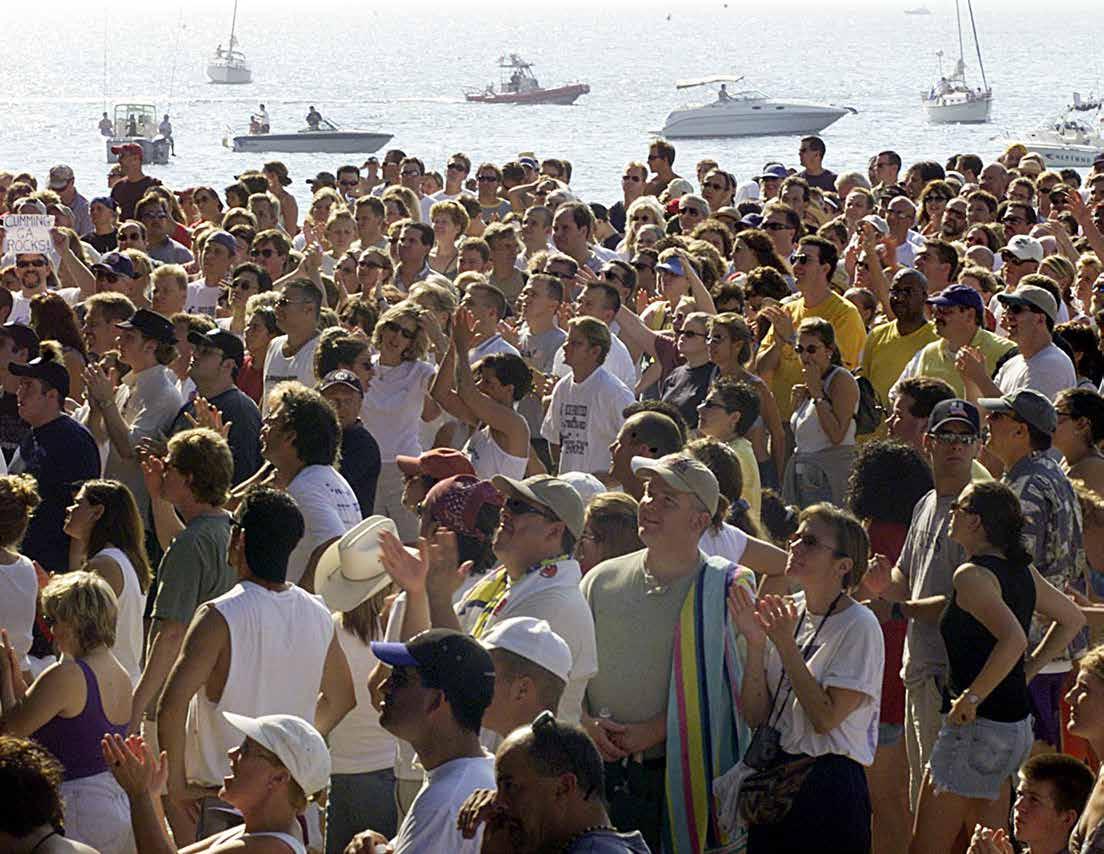

‘Hold On,’ Springsteen says, again and again, on ‘Seeger Sessions’
BY MICHAEL RILEY
This story originally appeared in the Asbury Park Press on April 30, 2006.
It comes down to two words, really. Two words and the end of the world. These two words form the moral and emotional center of Springsteen’s new album, and perhaps more poignantly, for his current concert tour on behalf of that album. (The disc, titled “We Shall Overcome: The Seeger Sessions,” consists of 13 covers of folk songs popularized by folk singer Pete Seeger.)
Those two words are part of the chorus to the gospel song cum civil rights anthem called “Keep Your Eyes on the Prize.”
“Hold on,” Springsteen sings again and again, and in doing so, he moves his traveling chautauqua/tent-revival show into the world of apocalyptic literature.
Most of us hear the word apocalypse and think of the visions conjured up in the last half of the Book of Daniel and in the Revelation of John: visions of
world-ending battles, blood-soaked bodies stretching for miles. The skies darken and redden, filled with fierce armies of angels doing battle against monsters and dragons, while the stars fall and the world ends. It is theology as science fiction.
But those images almost miss the point of apocalyptic literature. Apocalyptic literature is written during times of hardship and persecution of those who see themselves as God’s people. The fantastic and befuddling images are code, meant to keep the true message out of the hands of the powers that be, those with the whips and chains.
And the true message is simply and inevitably this: The world seems to be spinning out of control. Justice is a myth, and life is filled with sin and pain and misery. But God still is in charge of history, he still loves his children and is working even now to deliver them from evil and bring them home.
Apocalyptic literature is a tract for hard
times, and the message at the heart of it is simply: “Hold on.”
And that is the message Springsteen and the Seeger Sessions Band are evidently going to bring night after night on the current tour, which will make stops in New York and New Jersey in late June.
Most apocalyptic preachers give us images of the future. Springsteen’s apocalypse is curious in that he has reached into the past, bringing songs over a century old to bear on the world of today and tomorrow.
He opened one of the recent rehearsal shows at Asbury Park’s Convention Hall with “Mary, Don’t You Weep,” a song that says our tears will end once we realize that if God has delivered Moses and his people in the past, he will surely do the same again for us:
“This old world will rock,” he sings, and a fire is coming.
Everybody assumes that the apocalypse is a world-shattering event.


Life, death and the code of the E Street Band
BY CHRIS JORDAN
This story originally appeared in the Asbury Park Press on Oct. 25, 2020.
Are you ready for the return of the heart-stopping, bootyshaking, house-rocking E Street Band?
Bruce Springsteen is. the Boss sat down with the USA Today Network via Zoom on Oct. 12 from his Colts Neck home recording studio to talk about the new album, “Letter to You,” and film, “Bruce Springsteen’s Letter to You.” The album, and film on Apple TV+, mark the return of the E Street Band on record for the first time in six years. Both are out now.
The works are a tribute to the band and Springsteen’s first group, the Castiles of Freehold. They’re also a celebration of the life essence that is music.
Springsteen, wearing a leather jacket, answered our questions for about a half hour. Here’s a lightly edited transcript of the interview.
The E Street Band on the album, in the movie, 45 years. There’s never stories about bad things happening to members. No members have written
a tell-all book like “I Survived Bruce Springsteen and the E Street Band,” and even members who have been asked to leave have nothing but good and positive things to say. How does this happen? This strikes me as quite a rare thing in the rock ‘n’ roll world?
We try to do right, take care of them. Me and Vini Lopez (original E Street Band drummer) remain very close. Vini’s a great guy, a totally unique and fabulous drummer and we bump into each other every once in a while. … I don’t see him a lot but when I do see him, he’s a lovely figure in my life, and I go back a lot of those days with Tinker (former manager Carl West). All the people from my old time, we’ve sustained good relationships.
As far as the band goes, the band is just like every other band, after 45 years, people have their old grudges, things they don’t like about this guy and things they don’t like about that guy. And there’s the normal array of emotional feelings that you would find in any group of people, or any family who’ve spent 45 years of their lives together. That’s a long time.
But at the same time I will pat myself on the back and say that the ship was
well captained, No. 1, and that everyone on the ship subsumed their own egos and grudges for the greater good and the greater identity of what we believed in, which was the E Street Band. That would be the best way I could put it.
Up to this point that’s been how we’ve operated, and the guys are free to say or do whatever they feel like saying or doing. But basically I feel that’s it’s been good relationships and we’ve dealt with each other in good faith. Not perfectly, we’re all human. People make mistakes. I’ve made mistakes. Guys in the band have made mistakes. We’ve argued, we’ve split apart for long periods of time. We had a decade where we didn’t play together. Steve left the band in ’83 or ’84, then came back later.
So we’ve had our ins and outs and ups and downs, so it wasn’t all completely smooth sailing. But what we’ve had over the past 20 years is the greatest 20 years of our playing life where I believe most of the members would say they’ve been the happiest they’ve ever been — and sort of the past is the past for most of us and we live in the present and the present is pretty nice for everybody.
